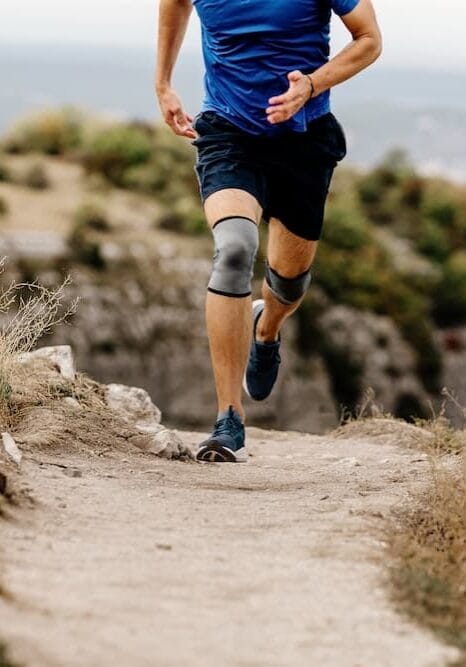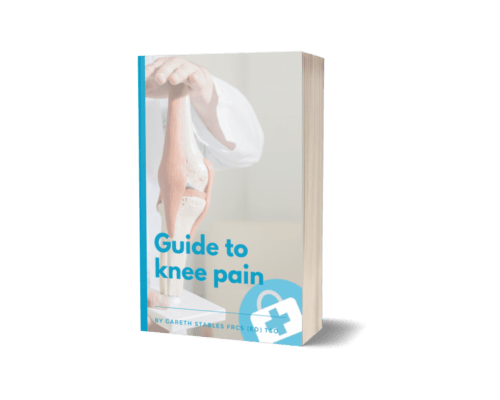Avoiding knee injuries in rugby
Almost all athletes rely heavily on their knees. Sports such as rugby, football and netball can create a huge amount of stress on your knees.
Unfortunately, all too often I see patients in my specialist knee clinic who have suffered a significant injury that puts them out of action for weeks sometimes months. Many of these injuries could have been avoided with proper strength and conditioning training and a proper warm-up.
Your knees, as well as your ankle and hip joints, are held together by a variety of muscles, tendons, and ligaments. Warming up before exercising not only activates your muscles it has been also been shown to increase the amount of synovial fluid in the joints (which aids in joint lubrication and movement).
Before an exercise session, it is critical to warm up the three most important muscle groups: the thigh, the knee, and the calf. You must also address the hip adductors and gluteus muscles.
What Warm-up Prevents Knee Injuries?
Injury preventive warm-up programs for young male and female soccer players have been shown to decrease knee injury rates. In one study conducted in Sweden they looked at knee and torso strengthening warm-ups and their effects on knee injuries. The study showed that injuries were reduced by almost 2/3 in the test group that did this warm-up two times a week.
One of the most widely known studies and programs was developed in the US after it was noted that there was a disproportionately high number of serious knee injuries in college soccer players. The PEP Program: Prevent Injury and Enhance Performance is an exercise program designed by doctors, physical therapists, and athletic trainers to reduce the incidence ACL injuries in soccer players.
Many of these studies have been adopted by sporting associations around the globe such as FIFA (FIFA11+) and Netball Australia.
Here are two short videos that demonstrate the exercises and warm-ups that have been recommended to reduce knee injuries:
Preventing knee injuries in rugby
ACL injuries account for the largest proportion of missed days due to knee injuries in rugby as they are typically among the most severe. ACL prevention programs might not eliminate the risk of ACL injuries that occur by tackling, but they may help decrease the rate of noncontact injuries that can tear your ligament. If even one player on a team can be saved from ACL injury, that would be a significant benefit for the player and the team, as it can take 9-12 months to get back to rugby after ACL reconstruction.
Speed and endurance training
Whilst warming up is important, its also worth noting the importance of fitness and preparation for competition.
When looking at rugby injuries in particular studies have shown that:
- Rugby players with lower speed and lower max VO2 (maximal aerobic power) are at increased risk for injury.
- Players who train for less than 18 weeks prior to an initial injury are at increased risk for a subsequent injury as well.
- Also, several rugby injuries seem to occur more frequently late in games when the players are fatigued.
Therefore, incorporating speed and endurance training into workouts and practices for rugby teams might decrease injury rates.
Take time to recover fully after an injury
It makes sense that in a contact and collision sport such as rugby that players suffer who suffer moderately severe injuries are at increased risk of sustaining further injuries .Due to the significant force involved in the collisions and the speed and power of the players, it is essential that players fully heal from their injuries, recover full range of motion and strength, and have completed physiotherapy led functional training before returning to the training field.
Learn to fall
It has been shown that where a tackler jumps on a ball carrier from the side or behind and the ball carrier tries to keep running leads to an increased risk for more serious knee, leg, and ankle injuries.
Obviously trying to continue running possibly gains extra metres on the field, but it potentially sets up the player for multiple missed games due to a serious injury. Teaching ball carriers to go to the ground immediately when they feel the weight of a tackler might decrease the risk of these more serious lower extremity injuries.
Consider balance and proprioception training programs to reduce ankle injuries
Lateral ankle sprains have been shown to be a common injury in professional rugby players. Poor balance and lack of proprioception have been identified as risk factors for lateral ankle sprains. Since a large percentage of ankle injuries in rugby are sustained in noncontact activities, training programs to teach proprioception and balance can lower the rate of ankle injuries. These programs might especially help the risk of recurrent injuries, which are common.
Make sure that playing fields are safe
Rugby teams, especially at the youth and recreational level, often do not have dedicated fields to use for their own practices and games. Often these teams and leagues borrow fields that belong to other sports. Care should be used to ensure that fields are safe. Players and coaches must make sure that there are no dangers on the field, such as holes and rocks. There should also be adequate lighting and enough room on the perimeter of the field to avoid injuries from players being tackled toward the edges of the field.

How can I Get Help With My Knee Injury?
As with any condition, it’s important to get the right diagnosis and the right advice and treatment sooner rather than later. Often if diagnosed early knee injuries can be managed with non-invasive treatments such as physiotherapy and exercise. If things aren’t improving then here at the My Knee Doc clinic we offer treatments such as knee arthroscopy and ACL reconstruction which can help you get back in the game quickly.
If you’d like to find out more about how we can help or if you just want to speak to our specialist knee surgeon Mr Gareth Stables then click here and arrange a call.


